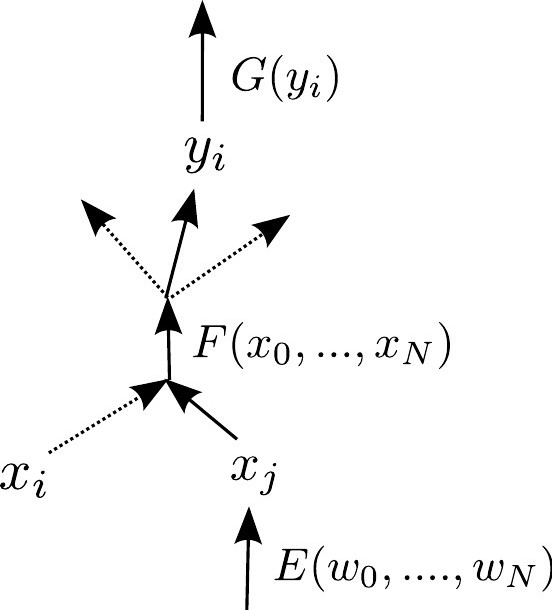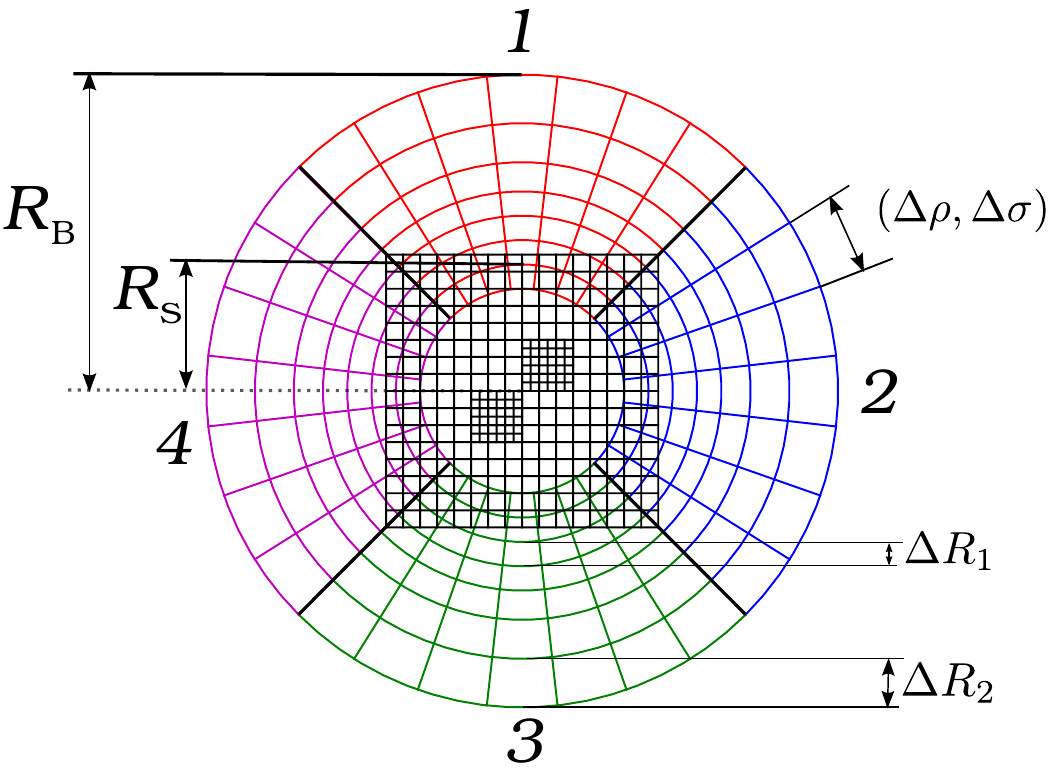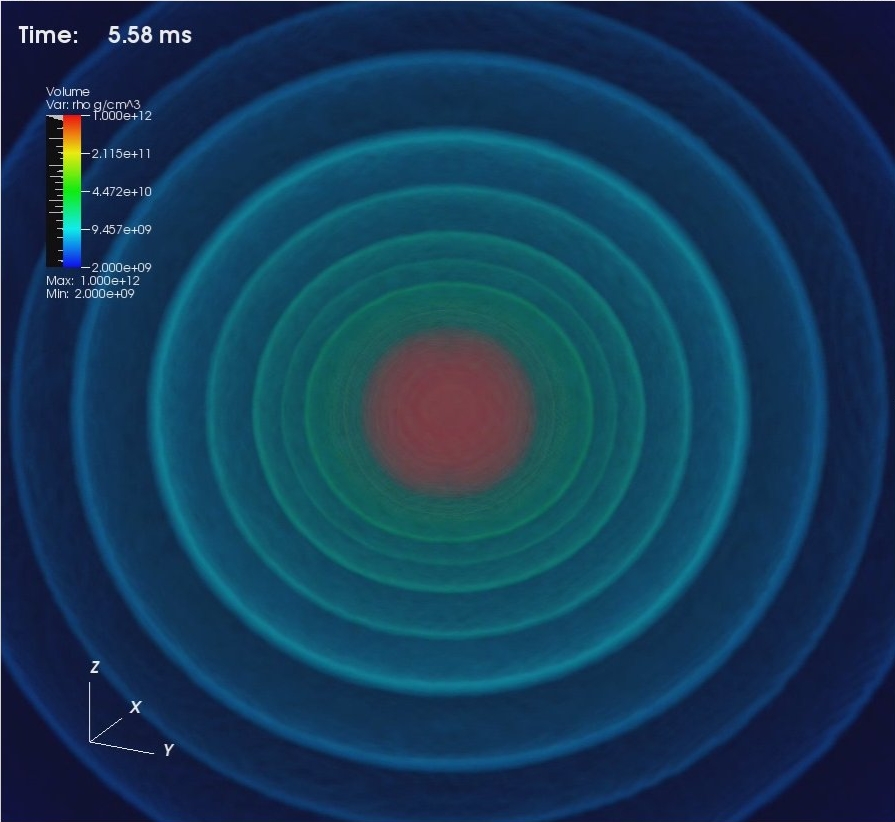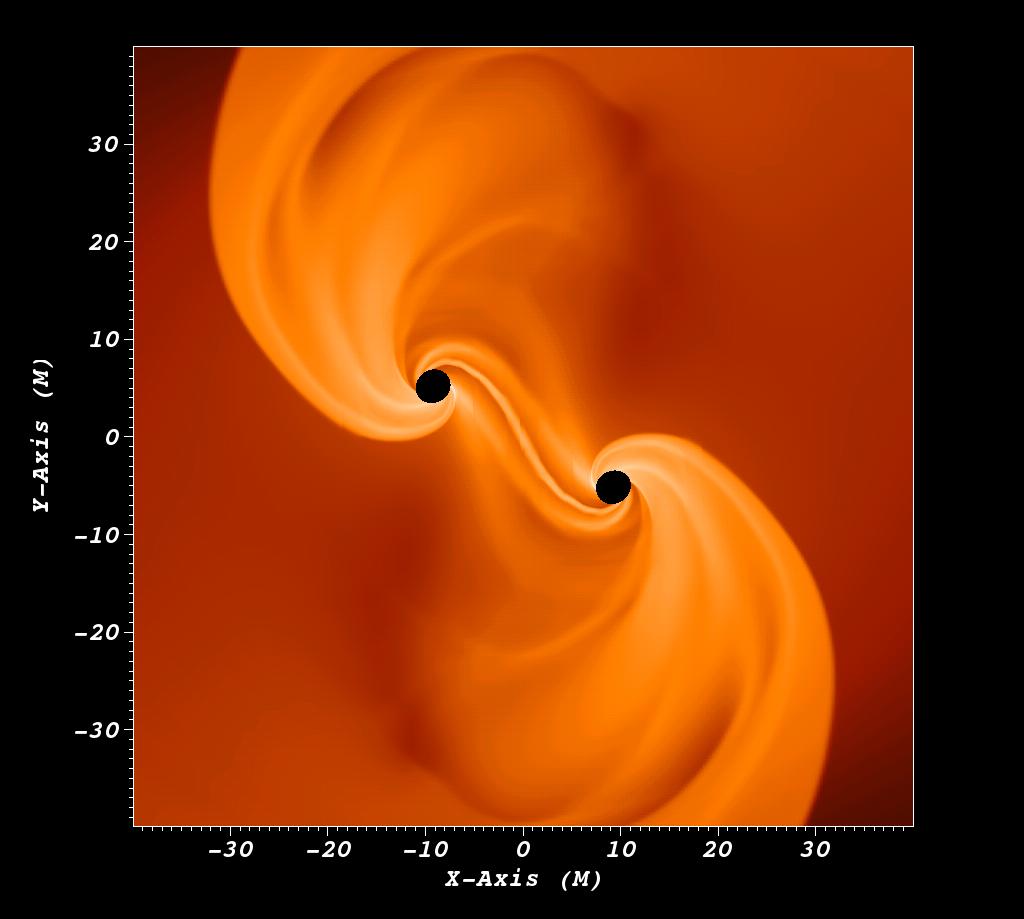Research
Below, I detail my current research interests. An overview of my past research achievements can be found here.
Numerical Schemes, Simulation Code Development & Supercomputing
 Collapsing stars, or the merger of binary neutron stars, are among the most computationally challenging systems scientists are attempting to study. These sources typically involve matter under extreme conditions with dynamics on multiple length scales, including nuclear reactions, magnetic fields, strongly curved dynamical spacetimes, and strong neutrino and photon radiation. Due to hydrodynamic instabilities and turbulence that inevitably arise during their dynamical evolution, these systems are intrinsically multi-dimensional. To get a complete and accurate picture of the dynamics of the source as well as all emitted and observable signals in gravitational-waves, electromagnetic radiation, and neutrinos, massively parallel multiscale multiphysics numerical relativity simulations are required.
Collapsing stars, or the merger of binary neutron stars, are among the most computationally challenging systems scientists are attempting to study. These sources typically involve matter under extreme conditions with dynamics on multiple length scales, including nuclear reactions, magnetic fields, strongly curved dynamical spacetimes, and strong neutrino and photon radiation. Due to hydrodynamic instabilities and turbulence that inevitably arise during their dynamical evolution, these systems are intrinsically multi-dimensional. To get a complete and accurate picture of the dynamics of the source as well as all emitted and observable signals in gravitational-waves, electromagnetic radiation, and neutrinos, massively parallel multiscale multiphysics numerical relativity simulations are required.  These simulations are computationally very intense, and require large supercomputers. A critical aspect of the numerical simulations is their scalability to a large number of processor cores. To overcome starvation bottlenecks, I develop a new task-based simulation framework that makes use of state-of-the-art C++14 template meta- and functional programming.
These simulations are computationally very intense, and require large supercomputers. A critical aspect of the numerical simulations is their scalability to a large number of processor cores. To overcome starvation bottlenecks, I develop a new task-based simulation framework that makes use of state-of-the-art C++14 template meta- and functional programming.
I am also developing new numerical schemes for general-relativistic hydrodynamic evolution codes coupled to fully non-linear Einstein evolutions. My codes include flux-conservative adaptive mesh-refinement (AMR), and multiblocks, and are based on finite volumes, finite differences, and spectral methods.
Stellar Collapse & Black Hole Formation
3D Black Hole F ormation and Central Engines of long gamma-ray bursts (lGRBs): It is widely accepted that lGRBs are associated with the death of massive stars. A likely scenario providing the necessary energy of 10^51 ergs, and perhaps setting the stage for a lGRB is given by the collapsar model. This model envisions core collapse of a massive star to a black hole surrounded by an accretion disk that may be powering strongly relativistic jet outflows along the axis of rotation, over timescales compatible with lGRBs. Following core collapse, protoneutron star formation and subsequent black hole formation, the system enters the phase of hyperaccretion, where matter falls into the black hole at high accretion rates. Eventually, if sufficient amounts of high angular momentum matter are present, a stable accretion disk forms. Recently, I and collaborators have simulated this event up to the early hyperaccretion phase using general-relativistic (GR) hydrodynamics simulations. My goal, however, is to be able to continue following the hyperaccretion phase all the way to disk and jet formation, thus being able to determine under which parameters and conditions a central engine for long GRBs may be produced, and how it operates.
ormation and Central Engines of long gamma-ray bursts (lGRBs): It is widely accepted that lGRBs are associated with the death of massive stars. A likely scenario providing the necessary energy of 10^51 ergs, and perhaps setting the stage for a lGRB is given by the collapsar model. This model envisions core collapse of a massive star to a black hole surrounded by an accretion disk that may be powering strongly relativistic jet outflows along the axis of rotation, over timescales compatible with lGRBs. Following core collapse, protoneutron star formation and subsequent black hole formation, the system enters the phase of hyperaccretion, where matter falls into the black hole at high accretion rates. Eventually, if sufficient amounts of high angular momentum matter are present, a stable accretion disk forms. Recently, I and collaborators have simulated this event up to the early hyperaccretion phase using general-relativistic (GR) hydrodynamics simulations. My goal, however, is to be able to continue following the hyperaccretion phase all the way to disk and jet formation, thus being able to determine under which parameters and conditions a central engine for long GRBs may be produced, and how it operates.
Supermassive Star Collapse:  Supermassive stars are possible candidates for seeding supermassive black holes (SMBHs) in the very early universe. These stars could have formed in the direct collapse of primordial gas clouds, and are mainly radiation pressure supported. During their short life, they cool and contract, and ultimately evolve to the onset of general-relativistic gravitational collapse. The outcome of collapse is either a SMBH, or a powerful thermonuclear supernova explosion, leaving no remnant behind. To date, only a limited set of simulations exists. To get a more complete and accurate picture that can assess the visibility to the James Webb Space Telescope (JWST), ESA’s Euclid mission, NASA’s Wide-Field Infrared Survey Telescope (WFIRST), or to ESA’s eLISA mission, full numerical relativity hydrodynamic simulations including nuclear reactions and magnetic fields are required. I am using my simulation package to investigate the dynamics of these systems and to study their emitted signals.
Supermassive stars are possible candidates for seeding supermassive black holes (SMBHs) in the very early universe. These stars could have formed in the direct collapse of primordial gas clouds, and are mainly radiation pressure supported. During their short life, they cool and contract, and ultimately evolve to the onset of general-relativistic gravitational collapse. The outcome of collapse is either a SMBH, or a powerful thermonuclear supernova explosion, leaving no remnant behind. To date, only a limited set of simulations exists. To get a more complete and accurate picture that can assess the visibility to the James Webb Space Telescope (JWST), ESA’s Euclid mission, NASA’s Wide-Field Infrared Survey Telescope (WFIRST), or to ESA’s eLISA mission, full numerical relativity hydrodynamic simulations including nuclear reactions and magnetic fields are required. I am using my simulation package to investigate the dynamics of these systems and to study their emitted signals.
Binary Black Hole & Binary Neutron Star Mergers
Binary black hole and binary neutron star inspirals and mergers are among the strongest sources for gravitational radiation. The gravitational-wave emission of such systems will inform us about their parameters, and can also be used for ultra dense nuclear matter that exists in neutron stars. Depending on the binary neutron star configuration, significant neutron-rich material can be ejected during the merger process giving rise to a variety of observable electromagnetic counterparts (kilonovae/macronovae). A detailed understanding of binary neutron star merger dynamics that includes the emitted gravitational waves and associated electromagnetic counterparts is of great importance to gravitational-wave data analysis. If electromagnetic counterparts are observed and localized in the sky, they can be used to significantly enhance the GW signal-to-noise ratio.
